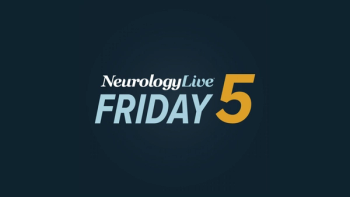
B-Cell Modulator Obexelimab Shows Pronounced Relapse Reduction in Phase 2 MoonStone Trial
Key Takeaways
- Obexelimab achieved a 95% reduction in gadolinium-enhancing lesions in relapsing MS, supporting its potential for autoimmune disease treatment.
- The MoonStone trial's double-blind phase showed significant lesion suppression, with obexelimab considered safe and well-tolerated.
Obexelimab shows promising results in reducing lesions in relapsing multiple sclerosis, highlighting its potential as a new treatment for autoimmune diseases.
Newly announced 12-week data from the phase 2 MoonStone trial (NCT06564311) revealed that treatment with obexelimab (Zenas BioPharma), an investigational, nondepleting B-cell modulator, led to a 95% relative reduction in gadolinium-enhancing lesions (GdE), the primary end point, in patients with relapsing multiple sclerosis (MS). Overall, the positive results further support the medication’s development as a treatment option for autoimmune diseases like MS.1
The newly announced data are from Part A of the study, a 12-week, randomized, placebo-controlled period, during which obexelimab or placebo was administered as weekly subcutaneous injections. At the conclusion of the double-blind period, investigators recorded a statistically significant difference in cumulative number of new GdE T1 hyperintense lesions over weeks 8 and week 12 (P = .0009). Notably, near-complete suppression of these lesions was observed at week 8 and sustained through the end of the double-blind portion.
MoonStone is a 2-part trial of 116 patients with relapsing MS, with Part A being the double-blind phase, followed by Part B, which is a 12-week open-label extension. According to its report, Zenas is expected to read out the 24-week results from MoonStone in the first quarter of 2026, as well as topline data from its phase 3 INDIGO trial (NCT05662241) of obexelimab in patients with Immunoglobulin G4-related disease.
Lonnie Moulder, founder and CEO at Zenas, said in a statement, "These profound MoonStone trial results, including the near elimination of new GdE T1 lesions, provide strong evidence of the deep and sustained inhibitory mechanism of obexelimab and further validate the potential for obexelimab to become a meaningful therapy across multiple autoimmune diseases, including immunoglobulin G4-related disease and systemic lupus erythematosus, which are currently being evaluated by Zenas in phase 3 and phase 2 clinical trials."
By week 12, the adjusted mean number of new GdE T1 hypertense lesions per scan in the obexelimab group was 0.01 (95% CI, 0.00-0.06) compared to 0.23 (95% CI, 0.11-0.51) for placebo. New or enlarging T2-weighted hyperintense lesions, a secondary end point, were significantly reduced through obexelimab treatment relative to placebo. Above all, the investigational agent was considered safe, with cases of infections and hypersensitivity as the noted adverse events.
Formerly known as XmAb5871, obexelimab contains a dual engagement mechanism of action, binding to CD19 on B cells while simultaneously engaging the inhibitory Fc receptor FcγRIIb via an Fc-engineered domain with high affinity. Obexelimab may be different from other marketed anti-CD20 B-cell depleters in that it aims to modulate/inhibit B-cell activity without depleting the pool, potentially preserving immunoglobulin levels and vaccine responses relative to chronic depletion.
READ MORE:
"The observed clinical activity in the MoonStone trial, combined with obexelimab’s unique inhibitory mechanism of action, subcutaneous self-administration and tolerability profile, position obexelimab as a potential option to broadly address the pathogenic role of B cells in autoimmune diseases,” Lisa von Moltke, MD, head of research and development, and chief medical officer at Zenas, said in a statement.1 "With these highly statistically significant data, we look forward to reporting 24-week data in the first quarter of 2026, which will include additional secondary and exploratory end points that may inform obexelimab’s potential impact on disability progression and help us determine next steps for future development of obexelimab in relapsing MS."
The company noted it plans to initiate a large-scale, global phase 3 trial of its other small molecule, orelabrutinib, in patients with secondary progressive MS in the first quarter of 2026. Orelabrutinib, a Bruton tyrosine kinase inhibitor,
In this phase 2 trial, 158 patients with relapsing-remitting MS were randomly assigned 1:1:1 to placebo, orelabrutinib 50 mg daily, or orelabrutinib 80 mg daily, and orelabrutinib 50 mg twice daily for a 24-week period. At 12 weeks, all 3 active treatment arms demonstrated statistically significant reductions in the cumulative number of new Gd+ T1 brain lesions—the study’s primary end point—compared with placebo (n = 115; P < .05). Importantly, the 80 mg once-daily and 50 mg twice-daily regimens maintained these significant reductions through 24 weeks relative to both the placebo and 50 mg once-daily groups (P < .05).
In the most recent analysis, the 80 mg once-daily group demonstrated the greatest reduction in Gd+ T1 lesions—showing a 90.4% decrease at week 12 (95% CI, 58.2%-97.8%) vs placebo and a 92.3% decrease at week 24 (95% CI, 56.5%-98.6%) vs the placebo/50 mg once-daily group. Notably, lesion suppression across all orelabrutinib groups was evident as early as week 4 and remained consistent through week 24.
REFERENCES
1. Zenas BioPharma announces positive results from phase 2 MoonStone trial of obexelimab in relapsing multiple sclerosis. News release. Zenas Biopharma. October 27, 2025. Accessed October 29, 2025. https://finance.yahoo.com/news/zenas-biopharma-announces-positive-results-110500218.html
2. Xu Y, Chen X, Tang W. P094. Positive phase 2 results of orelabrutinib in patients with relapsing-remitting multiple sclerosis. Presented at: 2025 ACTRIMS Forum; February 27-March 1, 2025; West Palm Beach, FL. Abstract P094.
Newsletter
Keep your finger on the pulse of neurology—subscribe to NeurologyLive for expert interviews, new data, and breakthrough treatment updates.































